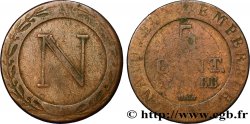E-auction 399-311809 - fco_637071 - MARTINIQUE Bon pour 1 Franc Colonie de la Martinique 1922 sans atelier
You must signin and be an approved bidder to bid, LOGIN TO BID. Accounts are subject to approval and the approval process takes place within 48 hours. Do not wait until the day a sale closes to register. Clicking on « bid » constitutes acceptance of the terms of use of cgb.fr private e-auctions.
Bids must be placed in whole Euro amounts only. The sale will start closing at the time stated on the item description; any bids received at the site after the closing time will not be executed. Transmission times may vary and bids could be rejected if you wait until the last second. For further information ckeck the E-auctions F.A.Q.
NO BUYER'S FEE.
NO BUYER'S FEE.
| Estimate : | 30 € |
| Price : | 22 € |
| Maximum bid : | 22 € |
| End of the sale : | 07 December 2020 16:42:30 |
| bidders : | 7 bidders |
Type : Bon pour 1 Franc Colonie de la Martinique
Date: 1922
Mint name / Town : sans atelier
Quantity minted : 300000
Metal : nickel silver
Diameter : 26 mm
Orientation dies : 6 h.
Weight : 7,92 g.
Edge : lisse
Obverse
Obverse legend : RÉPUBLIQUE * FRANÇAISE // COLONIE DE LA / MARTINIQUE.
Obverse description : buste à gauche d’une femme richement parée.
Reverse
Reverse legend : CONTRE-VALEUR DÉPOSÉE AU TRÉSOR.
Reverse description : et dans le champ au centre d’une couronne BON POUR / 1 FRANC / 1922.








 Report a mistake
Report a mistake Print the page
Print the page Share my selection
Share my selection Ask a question
Ask a question Consign / sell
Consign / sell
 Full data
Full data










